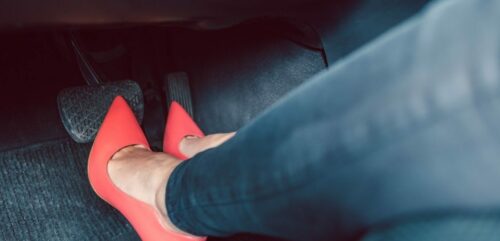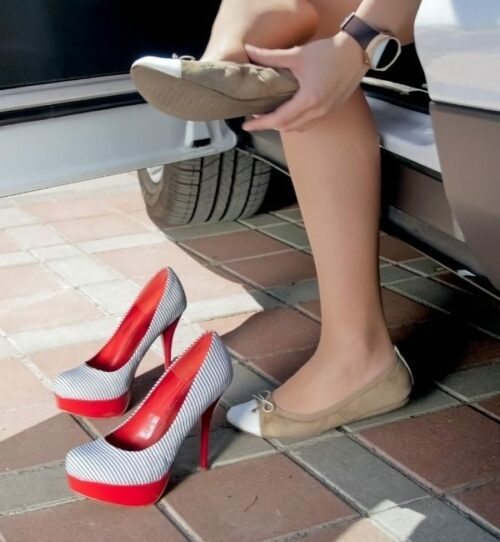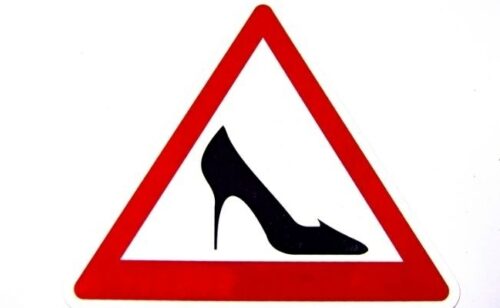
Your brand new pair of Jimmy Choos might look fantastic but certain footwear is just not suitable for driving in. Even something as simple as changing gears could cause a serious accident in the wrong type of shoes.

Avoiding Certain Shoes

The sole of the foot can become trapped underneath the pedal whilst raising your foot to change gear. Wearing mules, flip-flops and other shoes without adequate ankle support can lead to the foot slipping off the pedal or missing the pedal altogether. High heels are not advised for similar reasons. These dangers can cause accidents if you don't have enough time to recover from the situation.
A 2005 survey conducted by Norwich Union Motor Insurance in the UK found that flip-flops are the most dangerous item of driving footwear. Of the 1000 motorists questioned, three-quarters said that they found it challenging to drive in flip-flops, yet a quarter admitted to regularly driving in them.
What Shoes Should I Buy?
Driving footwear must have a sole thin enough to feel the amount of pedal pressure needed to meet the necessary braking and accelerating. Flip-flops prevent this. The brake and accelerator are both operated by the heel of the foot. Naturally, high-heeled shoes obstruct this, as they elevate the heel and tamper with the pedal operation.
Generally, the best option is to find footwear with thin soles, narrow welts (a necessity if your vehicle contains a confined pedal box) and adequate ankle flexibility. Trainers are best avoided as the soles are too thick and padded. Pumps or deck shoes are a safer option. For material reasons, keeping a pair of suitable driving shoes in the car avoids the chance of ruining a dressy pair of shoes on sharp objects in the footwell.
When shopping for shoes which you plan to wear whilst driving, forget about assessing how well you can walk in them. Instead, focus on how they will feel when you are driving, particularly how your ankles will be positioned in them. In reducing the level of discomfort, you will also decrease the amount of effort required for driving. This is especially important for long-distance driving and will increase your control and safety.
Driving In Wet Weather

You will need to take greater care in wet weather. Slippery soles make it more likely that your foot will miss the pedal or slide off prematurely. To combat this, ensure you dry them thoroughly on the carpet in the footwell before driving.
Top Footwear Tips
The Driving Standards Agency issues the following advice: "Wear sensible clothing for driving, especially on a long journey. Suitable shoes are particularly important. We also would not recommend driving barefoot because you don't have the same braking force with barefoot as you do with shoes."
Features of suitable driving footwear:
- The sole of the shoe should be no thicker than 10mm
- At the same time, the sole should not be too thin or too soft
- There should be enough grip to prevent the sole from slipping off the pedals
- The shoe should not be too heavy
- It should not limit ankle movement
- It should not be wide enough to mean accidentally stepping on two pedals
- Gym or walking shoes should work fine
The right footwear can make all the difference to your driving safety. Leave the dressy shoes aside whilst driving- it could save your life!
Disclaimer: The information in the article is for general purpose information only and should not be constituted as legal advice. This article has been produced by a third party and Jardine Motors does not take any responsibility for the completeness, accuracy, or reliability with respect to the website or the information provided. Article last updated October 2017.



